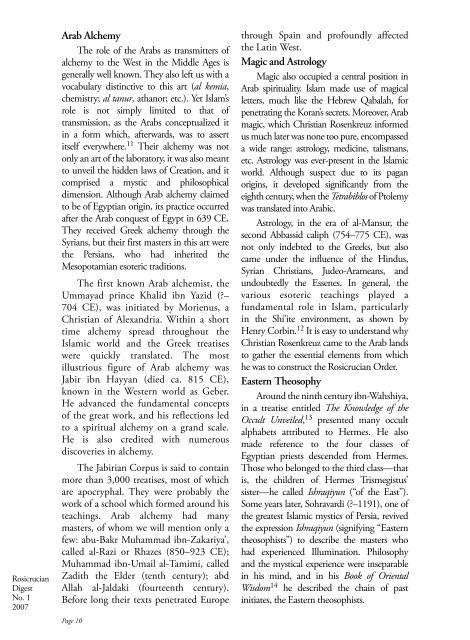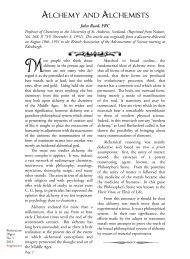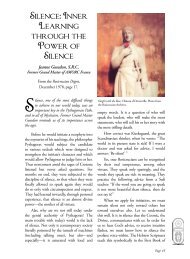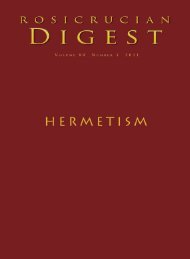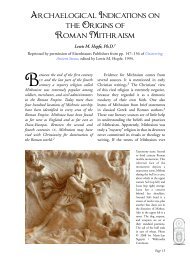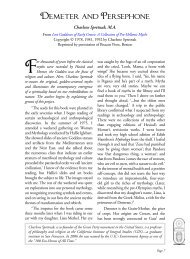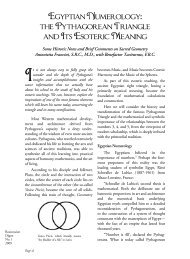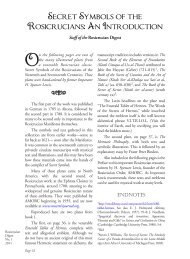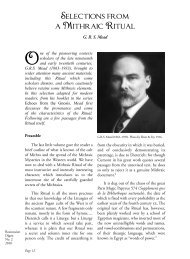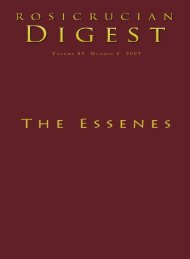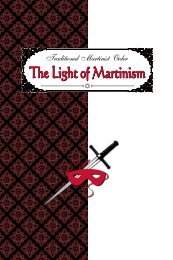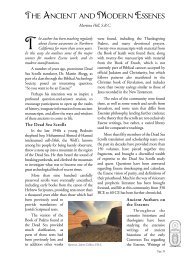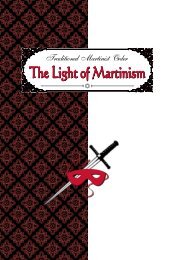Digest - Rosicrucian Order
Digest - Rosicrucian Order
Digest - Rosicrucian Order
You also want an ePaper? Increase the reach of your titles
YUMPU automatically turns print PDFs into web optimized ePapers that Google loves.
<strong>Rosicrucian</strong><br />
<strong>Digest</strong><br />
No. 1<br />
2007<br />
Arab Alchemy<br />
The role of the Arabs as transmitters of<br />
alchemy to the West in the Middle Ages is<br />
generally well known. They also left us with a<br />
vocabulary distinctive to this art (al kemia,<br />
chemistry; al tanur, athanor; etc.). Yet Islam’s<br />
role is not simply limited to that of<br />
transmission, as the Arabs conceptualized it<br />
in a form which, afterwards, was to assert<br />
itself everywhere. 11 Their alchemy was not<br />
only an art of the laboratory, it was also meant<br />
to unveil the hidden laws of Creation, and it<br />
comprised a mystic and philosophical<br />
dimension. Although Arab alchemy claimed<br />
to be of Egyptian origin, its practice occurred<br />
after the Arab conquest of Egypt in 639 CE.<br />
They received Greek alchemy through the<br />
Syrians, but their first masters in this art were<br />
the Persians, who had inherited the<br />
Mesopotamian esoteric traditions.<br />
The first known Arab alchemist, the<br />
Ummayad prince Khalid ibn Yazid (?–<br />
704 CE), was initiated by Morienus, a<br />
Christian of Alexandria. Within a short<br />
time alchemy spread throughout the<br />
Islamic world and the Greek treatises<br />
were quickly translated. The most<br />
illustrious figure of Arab alchemy was<br />
Jabir ibn Hayyan (died ca. 815 CE),<br />
known in the Western world as Geber.<br />
He advanced the fundamental concepts<br />
of the great work, and his reflections led<br />
to a spiritual alchemy on a grand scale.<br />
He is also credited with numerous<br />
discoveries in alchemy.<br />
The Jabirian Corpus is said to contain<br />
more than 3,000 treatises, most of which<br />
are apocryphal. They were probably the<br />
work of a school which formed around his<br />
teachings. Arab alchemy had many<br />
masters, of whom we will mention only a<br />
few: abu-Bakr Muhammad ibn-Zakariya’,<br />
called al-Razi or Rhazes (850–923 CE);<br />
Muhammad ibn-Umail al-Tamimi, called<br />
Zadith the Elder (tenth century); abd<br />
Allah al-Jaldaki (fourteenth century).<br />
Before long their texts penetrated Europe<br />
Page 10<br />
through Spain and profoundly affected<br />
the Latin West.<br />
Magic and Astrology<br />
Magic also occupied a central position in<br />
Arab spirituality. Islam made use of magical<br />
letters, much like the Hebrew Qabalah, for<br />
penetrating the Koran’s secrets. Moreover, Arab<br />
magic, which Christian Rosenkreuz informed<br />
us much later was none too pure, encompassed<br />
a wide range: astrology, medicine, talismans,<br />
etc. Astrology was ever-present in the Islamic<br />
world. Although suspect due to its pagan<br />
origins, it developed significantly from the<br />
eighth century, when the Tetrabiblos of Ptolemy<br />
was translated into Arabic.<br />
Astrology, in the era of al-Mansur, the<br />
second Abbassid caliph (754–775 CE), was<br />
not only indebted to the Greeks, but also<br />
came under the influence of the Hindus,<br />
Syrian Christians, Judeo-Arameans, and<br />
undoubtedly the Essenes. In general, the<br />
various esoteric teachings played a<br />
fundamental role in Islam, particularly<br />
in the Shi’ite environment, as shown by<br />
Henry Corbin. 12 It is easy to understand why<br />
Christian Rosenkreuz came to the Arab lands<br />
to gather the essential elements from which<br />
he was to construct the <strong>Rosicrucian</strong> <strong>Order</strong>.<br />
Eastern Theosophy<br />
Around the ninth century ibn-Wahshiya,<br />
in a treatise entitled The Knowledge of the<br />
Occult Unveiled, 13 presented many occult<br />
alphabets attributed to Hermes. He also<br />
made reference to the four classes of<br />
Egyptian priests descended from Hermes.<br />
Those who belonged to the third class—that<br />
is, the children of Hermes Trismegistus’<br />
sister—he called Ishraqiyun (“of the East”).<br />
Some years later, Sohravardi (?–1191), one of<br />
the greatest Islamic mystics of Persia, revived<br />
the expression Ishraqiyun (signifying “Eastern<br />
theosophists”) to describe the masters who<br />
had experienced Illumination. Philosophy<br />
and the mystical experience were inseparable<br />
in his mind, and in his Book of Oriental<br />
Wisdom 14 he described the chain of past<br />
initiates, the Eastern theosophists.


